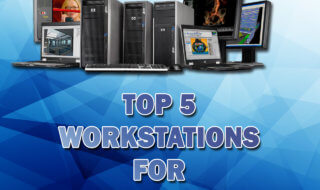The ubiquity of connected devices, spanning from fitness wearables to smart home appliances, has redefined our interaction with everyday objects. Despite the fact that these products have become increasingly common in our every-day lives, we rarely think about how the Internet of Things (IoT) ecosystem actually works. More specifically, most users have no clear understanding of how IoT devices connect to apps – or what the IoT application development process that makes this connection possible, actually looks like.

Whether it’s a smart home gadget, wearable technology, or industrial IoT machinery, connected apps and the associated software act as the brains behind these devices, enabling seamless functionality and user interactions.
While crafting an innovative, user-friendly, and feature-rich IoT device is commonly at the forefront of the product development process, it’s crucial to remember that providing users with an exceptional IoT companion app is just as important as the device itself. When interacting with your product, a user’s direct experience predominantly occurs through their interaction with its app. Therefore, when developing a connected application, emphasis should extend beyond mere functionality and include a concerted effort to create a streamlined, user-friendly, feature-rich, and visually appealing app that resonates with users.
Below are nine crucial elements to consider when developing an IoT application. For your IoT product to be successful, these elements should be at the forefront of any conversation you might have with any potential IoT application development team.
These nine considerations will ensure a comprehensive and successful connected product that captivates users:
Contents
Compatibility and Integration
In the diverse landscape of connected devices and platforms, ensuring compatibility with various operating systems, such as iOS, Android, and Windows, is paramount. A cross-platform approach broadens the user base, maximizing market potential and accessibility.
Moreover, integration with third-party platforms and services enhances the overall ecosystem of your connected device. Cloud storage integration, for instance, offers benefits like data backup, synchronization, and remote access, ensuring data integrity and consistent user experiences across multiple devices.
Integration with payment gateways or social media platforms adds further value, providing users with secure transaction capabilities and seamless interactions with their social networks. A comprehensive approach to compatibility and integration creates a connected product that is versatile and user-friendly.
Security and Privacy
Security and privacy are non-negotiable aspects of IoT application development. Implementing robust data encryption, secure communication protocols (such as SSL/TLS), and secure user authentication mechanisms are fundamental pillars of a secure connected application.
Proactive measures against vulnerabilities and cyber threats, such as regular security assessments and code reviews, are crucial.
Scalability and Performance
As connected devices gain popularity, scalability becomes a critical consideration. IoT app development must account for the apps’s ability to handle increasing user demand and growing concurrent connections. Scalable app architecture, efficient resource management through caching and compression, and load testing under simulated high-volume scenarios are key strategies to ensure optimal performance and responsiveness, even during peak usage periods.
Device Compatibility and Variability
IoT apps should support various device types and seamlessly integrate with different firmware versions. In a rapidly evolving landscape, supporting diverse devices and accommodating frequent hardware updates is essential. Compatibility across devices ensures a consistent user experience, regardless of the device used.
Accommodating differences in hardware capabilities and specifications is equally crucial. Recognizing variations in sensors, GPS, cameras, and other features among devices allows for efficient app optimization. Backward compatibility with older device models and graceful degradation ensure accessibility and performance across a broad range of devices.
User Experience and Interface
Facilitating exceptional UX design and a user-friendly UI is critical for IoT app success. UX design involves creating meaningful, user-centered experiences, while UI design focuses on visual and interactive elements. Ensuring an intuitive interface, efficiency, consistency, and clear information hierarchy enhances the overall user experience.
Additionally, adhering to ADA compliance standards guarantees equal accessibility for users with disabilities. Creating an accessible and visually appealing interface aligned with your brand’s visual identity fosters a strong and recognizable presence.
Connectivity and Network Reliability
To maximize accessibility and functionality, apps should support various network protocols like Wi-Fi, Bluetooth, and cellular connections. Handling intermittent connectivity issues gracefully through intelligent buffering, offline caching, and asynchronous data synchronization ensures a seamless user experience.
Offline functionalities empower users to continue using certain features even without network connectivity, with automatic synchronization once reconnected. Monitoring and optimizing network usage further contribute to efficient and responsible utilization of network resources.
Over-the-Air (OTA) Updates
Implementing secure and reliable OTA update mechanisms is crucial for delivering improvements and new features to connected devices seamlessly. Backward compatibility, version control, and rollback strategies ensure a smooth transition during updates while maintaining control over app stability.
OTA updates are integral for addressing vulnerabilities, introducing new features, and ensuring the continuous improvement of an IoT application.
Data Management and Analytics
Effective data management and analytics unlock the potential of the vast amounts of data generated by connected devices. Analyzing user behavior, preferences, and usage patterns provides actionable insights for enhancing the user experience. Predictive capabilities, anomaly detection, and innovation based on aggregated user data contribute to product improvement.
Battery Efficiency and Power Optimization
Optimizing battery efficiency is paramount for a positive user experience. Minimizing power consumption through resource optimization, intelligent scheduling of background processes, and power-saving modes ensures efficient operation without draining the device’s battery excessively. Continuous monitoring and optimization of power usage contribute to sustained battery efficiency over time.
Embarking on the journey of creating an Internet of Things device with a seamless app integration requires a holistic approach that considers compatibility, security, scalability, user experience, connectivity, updates, data management, and power optimization. By addressing these vital insights in the development process, and/or hiring an IoT application development company that uses these considerations as guidelines, IoT product developers can create connected products that not only meet user expectations but exceed them, providing a seamless and delightful user experience.



